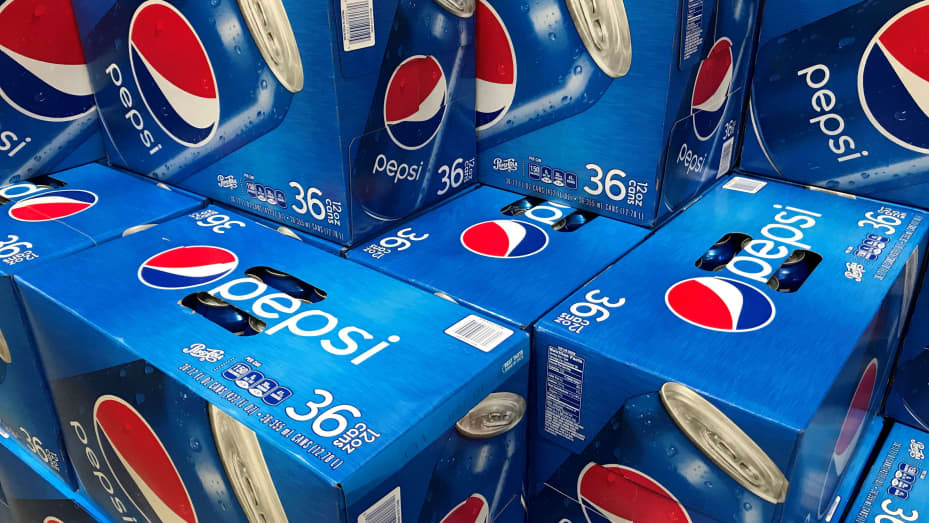PepsiCo Earnings: A Deep Dive into the Financial Performance

PepsiCo Earnings, one of the world’s largest and most iconic food and beverage companies, has consistently been a market leader known for its diverse portfolio of products. Beyond its signature cola brand, PepsiCo boasts an extensive array of snacks, juices, and other beverages. As a publicly-traded company, investors and stakeholders eagerly await the release of the company’s earnings reports, which provide valuable insights into its financial performance. In this 1000-word analysis, we will delve into PepsiCo’s earnings history, financial metrics, strategic outlook, and the factors driving its recent performance.
Earnings Overview-PepsiCo Earnings

Before we delve into the specifics, let’s first take a look at PepsiCo’s most recent earnings report. The company released its Q2 2023 earnings on July 12, 2023. PepsiCo reported net revenue of $22.7 billion for the quarter, reflecting a 12% increase over the prior year’s quarter. The company’s net income for the same period was $2.6 billion, up 28% compared to the previous year. These figures are significant and reflect the resilience and adaptability of the company, particularly in light of the economic challenges posed by the COVID-19 pandemic.
love travel
Earnings History-PepsiCo Earnings
PepsiCo’s earnings history showcases its consistent growth and profitability over the years. The company’s ability to deliver strong financial results can be attributed to its well-diversified product portfolio and strategic acquisitions. As we look back at the company’s earnings performance over the past decade, we see a steady upward trajectory. The company’s revenue and earnings have consistently grown, reflecting its effective management and ability to cater to evolving consumer preferences.
Tackling Water Pollution: Innovative Solutions for a Sustainable Future
Financial Metrics-PepsiCo Earnings
To gain a deeper understanding of PepsiCo’s financial performance, it’s essential to analyze key financial metrics. Here are some of the critical metrics used by analysts and investors to evaluate the company’s financial health:
- Revenue-PepsiCo Earnings: PepsiCo’s revenue growth has been consistently positive over the years. The company’s strong brand presence and innovative product offerings have contributed to its ability to capture market share and grow its top line.
- Profit Margins-PepsiCo Earnings: Examining profit margins, including gross margin and operating margin, is crucial. PepsiCo’s margins have generally remained stable, indicating efficient cost management and pricing strategies.
- Earnings per Share (EPS)-PepsiCo Earnings: PepsiCo has consistently delivered healthy EPS figures. A rising EPS is a positive sign for investors, as it signifies a company’s ability to generate more profit for each share outstanding.
- Debt Levels-PepsiCo Earnings: Evaluating a company’s debt levels is essential for understanding its financial risk. PepsiCo has managed its debt prudently, maintaining a reasonable debt-to-equity ratio.
- Cash Flow-PepsiCo Earnings: Operating cash flow is a vital indicator of a company’s financial health. PepsiCo has generated strong cash flows, allowing for investment in growth and rewarding shareholders with dividends and share buybacks.
Strategic Outlook
PepsiCo’s financial performance is underpinned by a strategic approach that adapts to changing consumer preferences, fosters innovation, and expands its global footprint. Let’s delve into some key aspects of its strategic outlook:
- Product Diversification: PepsiCo’s strategy revolves around diversification. The company’s product portfolio includes a wide range of beverages and snacks, including brands like Pepsi, Lay’s, Gatorade, Tropicana, and Quaker. This diversification minimizes risk and allows PepsiCo to cater to a broad spectrum of consumer preferences.
- Innovation: The company’s focus on innovation is evident in the constant introduction of new products and flavors. Whether it’s launching healthier options or experimenting with unique flavors, PepsiCo is keen on staying relevant in an ever-changing market.
- Sustainability Initiatives: PepsiCo is committed to sustainability and has set ambitious goals to reduce its environmental footprint. These efforts resonate with consumers who are increasingly concerned about the environment, and they contribute to the company’s long-term viability.
- Global Expansion: PepsiCo’s global presence is a significant advantage. The company continues to expand its reach into emerging markets, capitalizing on the growing middle class and the rising demand for convenient and affordable food and beverages.
- Digital Transformation: Like many companies in the 21st century, PepsiCo is embracing digital transformation. From e-commerce initiatives to data analytics, the company is leveraging technology to drive growth and enhance the consumer experience.
Factors Driving Recent Performance
To understand why PepsiCo’s recent earnings have been robust, we must consider the factors contributing to its success. Here are some key drivers:
- Consumer Preferences: Consumer preferences have shifted towards healthier and more diverse food and beverage options. PepsiCo’s commitment to product innovation, with a focus on healthier alternatives and sustainable packaging, aligns with these changing tastes.
- Pandemic Resilience: While the pandemic presented challenges to the food and beverage industry, it also created opportunities for companies to adapt and serve consumers’ changing needs. PepsiCo demonstrated resilience in managing the pandemic’s impact by swiftly adjusting its supply chain and distribution strategies.
- Brand Strength: PepsiCo’s strong brand equity and marketing campaigns have continued to resonate with consumers. Iconic brands like Pepsi, Lay’s, and Gatorade maintain their appeal.
- Acquisitions and Collaborations: Strategic acquisitions, such as the acquisition of Rockstar Energy and the collaboration with Beyond Meat for plant-based snacks, have allowed PepsiCo to diversify its offerings and tap into emerging trends.
- Supply Chain Efficiency: Efficient supply chain management has played a crucial role in meeting consumer demand, particularly during challenging times. PepsiCo’s ability to optimize its supply chain and distribution network has ensured product availability.
Challenges and Risks
While PepsiCo’s financial performance is impressive, it is not without challenges and risks:
- Health and Wellness Concerns: An ongoing challenge for the food and beverage industry is addressing consumer concerns about health and wellness. PepsiCo must continue to adapt and innovate to meet these demands.
- Competition: The industry is highly competitive, with rival companies continuously vying for market share. Staying ahead in this landscape requires constant innovation and effective marketing.
- Economic Uncertainty: Economic downturns and global economic conditions can impact consumer spending on discretionary items like snacks and beverages. PepsiCo must remain agile in navigating economic fluctuations.
- Regulatory Changes: The regulatory environment is subject to changes that can affect the company’s operations. Staying compliant and proactively addressing regulatory shifts is a critical concern.
- Sustainability Challenges: As consumers become more environmentally conscious, sustainability is paramount. Meeting sustainability goals while maintaining profitability can be challenging.
Conclusion
PepsiCo’s recent earnings report reflects a company that has not only withstood the challenges of a rapidly changing consumer landscape but has thrived. The company’s financial metrics, strategic outlook, and adaptability to evolving trends all contribute to its success.




